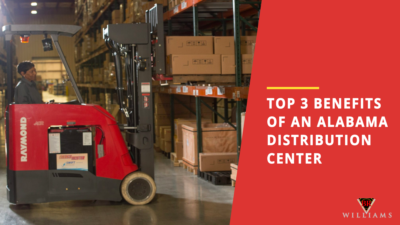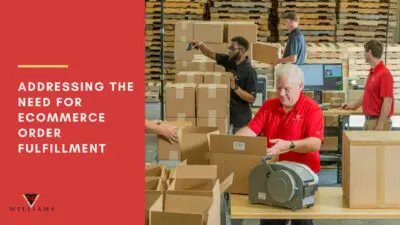
Sophisticated distribution strategies are utilizing both macro-fulfillment and micro-fulfillment centers across the United States to address emerging obstacles and gain competitive advantages. Companies are getting creative to solve order fulfillment challenges like shortening delivery windows, reducing shipping costs minimizing the distance between distribution centers, and overcoming labor shortages. But what are macro- and micro – fulfillment? Read on as we break down the differences of both e-commerce fulfillment strategies and explain how they work.
What Are the Main Fulfillment Strategies?
When determining the right fulfillment strategy for your business, the primary goals are to efficiently get your product to customers faster and deliver a better fulfillment experience. Each fulfillment strategy has its benefits and challenges, so it’s essential to determine what type of fulfillment center works best for you. What fulfillment strategy should you consider?
- A micro-fulfillment strategy places small-footprint warehouses close to densely populated urban locations. These warehouses support a limited customer base and minimal inventory of stock-keeping units (SKUs).
- Macro-fulfillment is a strategy that leverages online orders via a sizable centralized warehouse facility, supporting many customers and SKUs.
About Micro-Fulfillment Centers
Adopting a micro-fulfillment center can go a long way to contributing to your business and its e-commerce profitability. A micro-fulfillment center ranges from 5,000 to 20,000 square feet. It operates from a small warehouse, a dedicated section of your active brick-and-mortar store, or as an addition to an existing store that serves as an on-location sorting and fulfillment center.
While micro-fulfillment centers typically use manual picking, the hyperlocal placement and small size position them closer to the consumer, thus improving delivery times. The smaller size also requires a smaller upfront investment. When operating from an existing store, it allows you to use current supply chain infrastructure and assets. The downside to this strategy is that not all SKUs are readily accessible. Plus, serving in-store customers can detract from fulfillment times unless you have staff devoted to managing orders.
About Macro-Fulfillment Centers
As mentioned, a macro-fulfillment center utilizes a large warehouse facility to fulfill online orders. Thanks to 300,000 square feet of floor space or more, a macro-fulfillment company inventory management system can maintain many SKUs. Working with a macro-fulfillment center can improve order accuracy and reduce labor costs throughout the fulfillment process through broad access and technology use.
Technology like automated storage and retrieval systems or ASRS systems, process automation, and customized computer access programs like a warehouse management system (WMS), artificial intelligence, and machine learning go a long way to bolster online retailer fulfillment. For example, a fulfillment company can use robots to assemble orders and find the most economical routes across the fulfillment grid, ultimately eliminating inefficiencies.
After the picking process concludes, technology assists employees in placing items in totes. Finally, the orders are delivered directly to the customer or transported to a particular facility that supports last-mile delivery or pickup through a unique hub-and-spoke strategy.
How Micro- and Macro-Fulfillment Centers Can Work Together
The beauty of micro- and macro-fulfillment centers is fully realized when they work together. By combining a regional macro-fulfillment center as the hub with localized micro-fulfillment centers as spokes, you can further shorten your delivery distance for last-mile or last-hour delivery. The strategy supports in-store, curbside pickup, or “buy online, pick up in-store” fulfillment, and meets growing consumer expectations and ever-changing market conditions. It still allows for same-day or next-day delivery services from your micro-fulfillments center. Meanwhile, the macro-fulfillment center takes on automation, reduces handling costs, and carries more SKUs.
While there’s never a one-size-fits-all strategy, a hybrid hub-and-spoke network of fulfillment centers option may be right for you, depending on your product, average selling price, and the size of your stores. Combining these factors can lead you to a third-party logistics company, like BR Williams, serving as an extension of your distribution operations and fulfillment partner.
Why not take advantage of the benefits a macro-fulfillment center offers while still operating micro-fulfillment centers from your brick-and-mortar stores? You don’t have to do it all alone. Contact BR Williams today to set your business apart with direct fulfillment services and superior customer service to create a winning fulfillment strategy that works even as your business grows.
About BR Williams Trucking & Logistics
BR Williams, a family-owned Trucking, Warehousing, Fulfillment & Logistics Company has been serving customers since 1958. We specialize in removing the supply chain frustrations our customers have by developing custom-made solutions. We offer nationwide transportation services through our fleet and logistics division. Our multiple fulfillment and distribution warehouses in Alabama span over 1.7 million square feet. Our core values are HONESTY, INTEGRITY, SERVICE. We still serve our first customer that was established in 1958.
To discuss your supply chain needs, please contact us online or call (800) 523-7963



